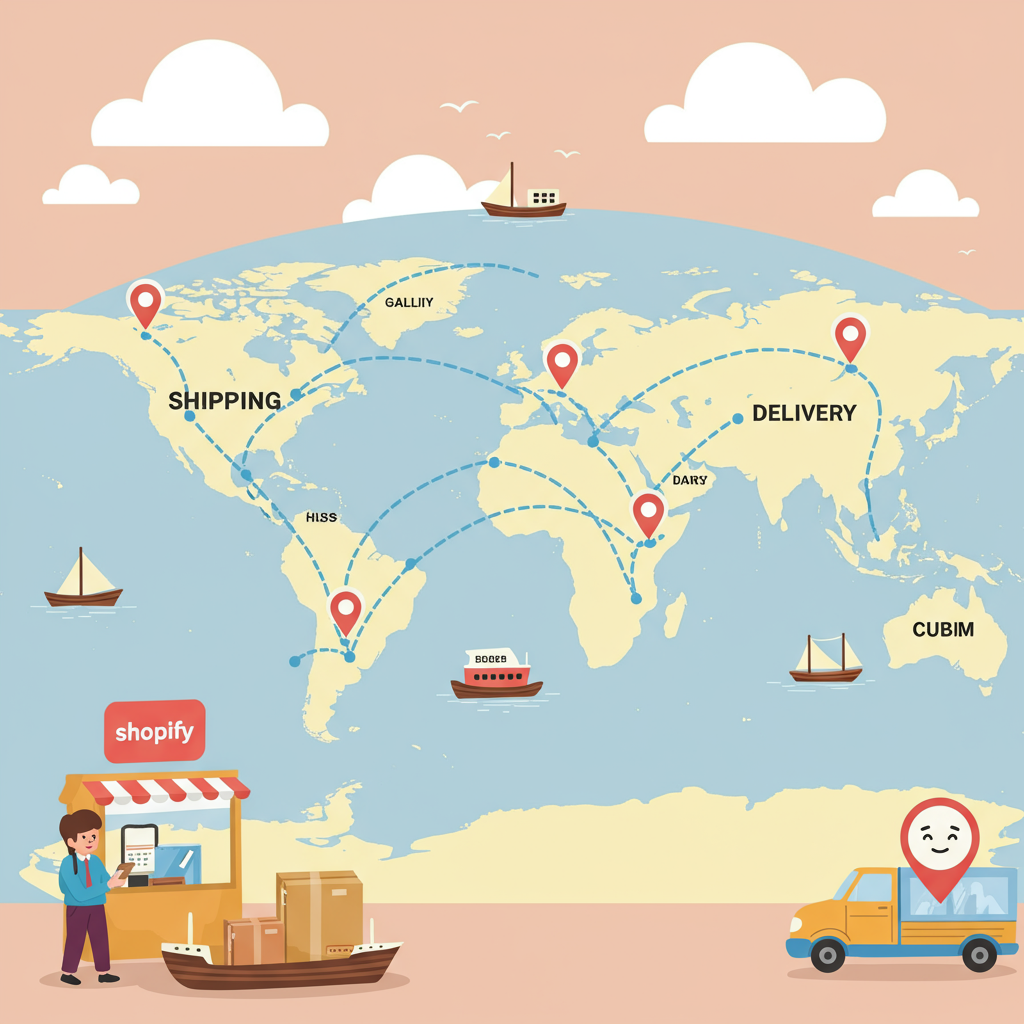Unlocking new markets and mastering cross-border fulfillment for your Shopify store.
Expanding your Shopify store beyond domestic borders is an incredibly exciting prospect.
It opens up vast new customer bases and revenue streams that you might not have even considered.
However, I know firsthand that the thought of international shipping can feel incredibly daunting.
There are so many variables: customs, duties, different carriers, and varying regulations.
But I’m here to tell you that it’s entirely manageable with the right strategy.
I’ve spent a lot of time refining my approach, and I want to share my comprehensive playbook with you.
My goal is to help you confidently ship your products worldwide and grow your global footprint.
First, before I even think about a shipping label, I always start with thorough market research.
Understanding your target countries is paramount. What’s the demand for your product there?
Are there any specific import restrictions or prohibited items you need to be aware of?
I also look into the average shipping costs to those regions and potential delivery times.
This initial groundwork helps me identify the most promising markets and avoid costly mistakes.
Next, choosing the right shipping carriers is absolutely crucial for international success.
I typically rely on a mix of major international carriers like DHL, FedEx, and UPS.
They offer robust tracking, reliable delivery times, and often handle customs clearance more smoothly.
For lighter, less time-sensitive items, I also consider national postal services, such as USPS, Royal Mail, or Canada Post.
These can be significantly more cost-effective, especially for smaller packages.
My strategy often involves offering different shipping options at checkout, allowing customers to choose based on speed and cost.
Setting up your shipping rates within Shopify requires careful consideration.
I generally prefer using calculated rates, which pull real-time shipping costs directly from the carriers.
This ensures accuracy and prevents me from over or undercharging my customers.
Flat rates can work for specific product types or regions where shipping costs are predictable.
However, I always make sure my flat rates cover my actual expenses to protect my margins.
Offering free international shipping can be a powerful marketing tool, but it needs to be strategically implemented.
If I offer free shipping, I ensure the cost is absorbed into the product price or factored into my overall business model.
Now, let’s talk about the elephant in the room: customs and duties.
This is where many merchants get tripped up, but it doesn’t have to be complicated.
You need to understand the difference between DDU (Delivery Duty Unpaid) and DDP (Delivery Duty Paid).
With DDU, the customer is responsible for paying any customs duties or taxes upon arrival.
I always make this crystal clear on my product pages, FAQs, and at checkout to avoid surprises.
For a premium customer experience, DDP means you, the merchant, pay the duties upfront.
This can reduce friction for the customer but adds complexity and cost to your operations.
Regardless of your choice, accurate customs declarations are non-negotiable.
I always use the correct HS (Harmonized System) codes for my products.
These codes classify your goods and help customs officials process your shipments efficiently.
Proper packaging and labeling are also vital for international shipments.
Your packages will endure a longer journey, so use durable materials and adequate cushioning.
Labels must be clear, legible, and securely attached, including all necessary customs forms.
Providing tracking information is not just a courtesy; it’s a necessity for international orders.
I ensure that every customer receives a tracking number as soon as their order ships.
Proactive communication about shipping status builds immense trust and reduces customer inquiries.
I use Shopify apps that automate tracking updates, keeping customers informed every step of the way.
Don’t forget about your international returns policy.
It needs to be clear, concise, and easily accessible on your website.
Outline who is responsible for return shipping costs and any associated duties or taxes.
Leveraging Shopify’s built-in features and the app ecosystem is key to streamlining your process.
Shopify’s native shipping settings are a great starting point for setting up zones and rates.
I also explore apps like ShipStation or Easyship, which can automate label creation, rate calculation, and tracking.
Multi-currency selling is a must for international success.
Shopify Payments allows customers to pay in their local currency, which significantly improves conversion rates.
Finally, be prepared for international customer service inquiries.
Time zone differences can be a challenge, so consider offering support through email or a ticketing system.
A comprehensive FAQ section can also reduce the volume of common questions.
What are your thoughts on this article? I’d love to hear your experiences or challenges with international shipping!
In conclusion, while international shipping might seem complex, it’s an incredibly rewarding endeavor.
With careful planning, the right tools, and a clear strategy, you can successfully expand your Shopify store globally.
Don’t be afraid to start small, learn from your experiences, and scale up as you gain confidence.
Your global customers are waiting for you to reach them!






